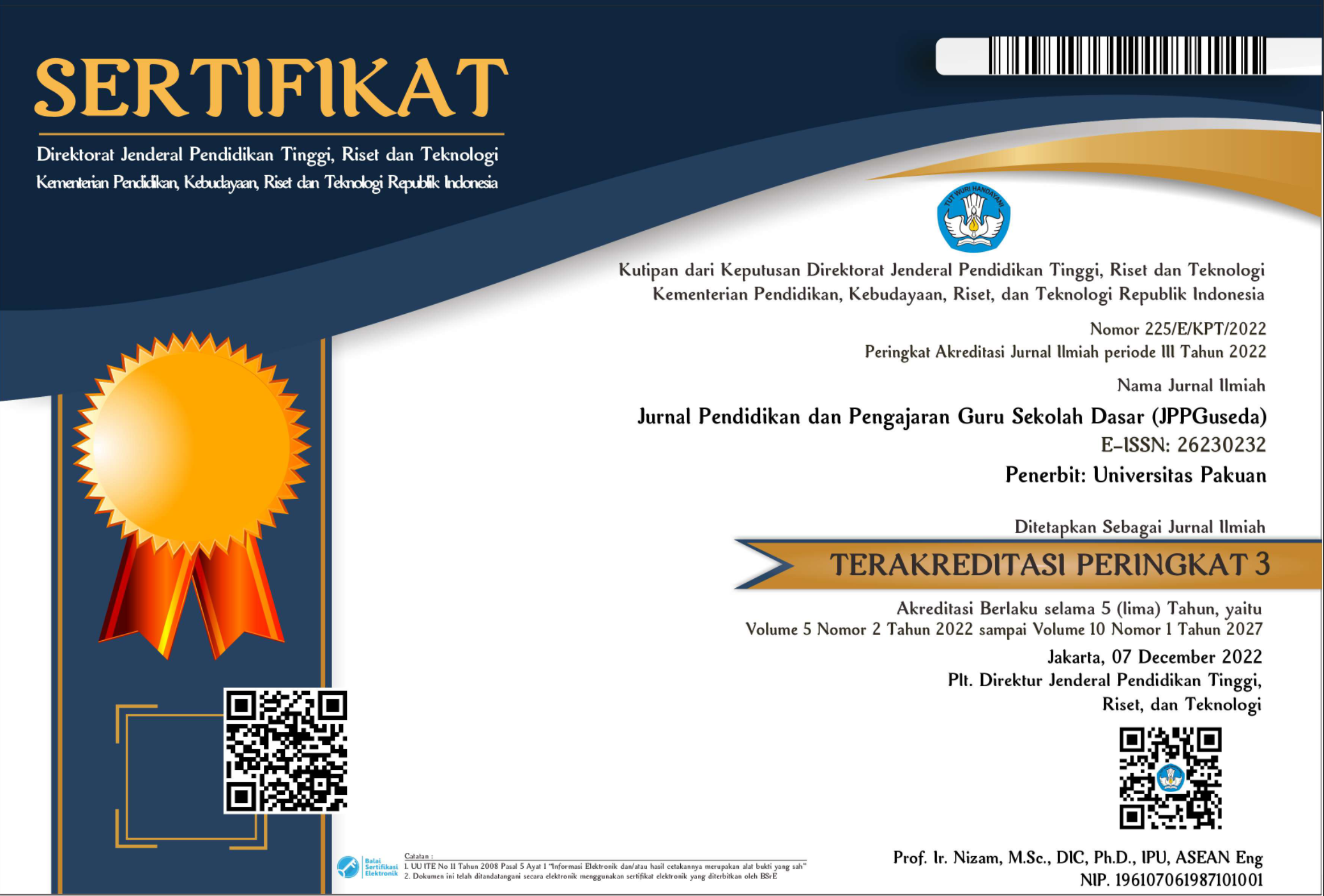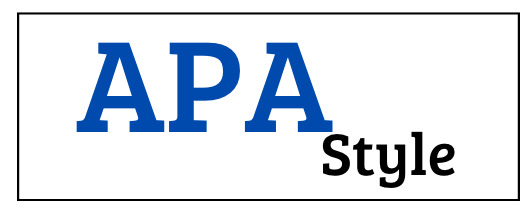OBJEK ASESMEN DALAM PERSPEKTIF KURIKULUM 2013
Abstract
ASSESSMENT OBJECTS IN THE PERSPECTIVE OF THE 2013 CURRICULUM
In loading the K13 curriculum, the outline of the learning program and the learning method unit is said to be a routine job. Regarding a material context, although it is not easy, it can still be handled because of course the assignment has been adjusted according to competence. A problem usually arises when looking for agreement in the choice of verbs to state goals in the application of learning. So that the basic competence and achievement indicators in the outline of the learning program are felt to be not quite what is meant by the compilers. So that in a learning process it is necessary to always hold an assessment or evaluation so that a teacher can obtain complete data on the progress of the students' abilities. In addition, evaluation must also be able to describe students' abilities in three domains, namely: cognitive, affective and psychomotor. The purpose of this paper is to attempt to describe the object of assessment in the concept of the 2013 curriculum. Through the literature review, it was found that the object of assessment in the application of the 2013 curriculum contained cognitive, affective and psychomotor theories which all integrated with one another. In a more structured manner the assessment object which includes cognitive, affective and psychomotor in its application in the 2013 curriculum describes the characteristics starting during the teaching and learning process in the hope that before we understand a concept, we must remember it first, before we apply it we must first understand it. Before we analyze, we have to apply it first. Before we evaluate, we have to analyze first. Before we can create or create something, then we have to remember, understand, apply, analyze and evaluate
Keywords
References
R. Pertiwi, Y. Suchyadi, and R. Handayani, Implementasi Program Pendidikan Karakter Di Sekolah Dasar Negeri Lawanggintung 01 Kota Bogor,†J. Pendidik. Pengajaran Guru Sekol. Dasar (JPPGuseda ), vol. 02, no. 01, pp. 4146, 2019.
D. Destiana, Y. Suchyadi, and F. Anjaswuri, Pengembangan Instrumen Penilaian Untuk Meningkatkan Kualitas Pembelajaran Produktif Di Sekolah Dasar,†J. Pendidik. Pengajaran Guru Sekol. Dasar (JPPGuseda ), vol. 03, no. September, pp. 119123, 2020.
A. Muri Yusuf. 2017. Asesmen Dan Evaluasi Pendidikan. Jakarta: Kencana.
Indras Toeti, Jenny, dan Siti Istiyati. 2019. Asesmen Dan Evaluasi Pembelajaran Di Sekolah Dasar.
Kitchenham, B., & S. Charters. 2007. Issue: EBSE 2007-001. Technical Report, Vol.2.
Utami, Retno. 2011. Taksonomi Bloom.†Freshwater Biology 6(4): 30115.
Y. Suchyadi, N. Safitri, and O. Sunardi, The Use Of Multimedia As An Effort To Improve Elementary Teacher Education Study Program College Students Comprehension Ability And Creative Thinking Skills In Following Science Study Courses,†JHSS (Journal Humanit. Soc. Stud., vol. 04, no. 02, pp. 201205, 2020.
Nurbudiyani, Iin. 2013. Pelaksanaan Pengukuran Ranah Kognituf, Afektif, dan Psikomotor pada Mata Bahwa Tidak Semua Bentuk Evaluasi Dapat Dipakai Pelajaran IPS Kelas III SD Muhammadiyah.†Universidade Federal do Triângulo Mineiro 53(9): 168999.
Firmansyah. 2016. Penerapan Teori Pembelajaran Kognitif Dalam Pembelajaran Pendidikan Jasmani Dan Kesehatan. Jurnal Pendidikan Olahraga 5(2): 15464.
O. Sunardi and Y. Suchyadi, Praktikum Sebagai Media Kompetensi Pedagogik Guru Sekolah Dasar,†J. Pendidik. dan Pengajaran Guru Sekol. Dasar, vol. 03, no. September, pp. 124127, 2020.
Narayanan, Mysore. 2009. Bloom s Taxonomy Bloom s Taxonomy.†Politics & Society (1): 25.
Wilson, Leslie Owen. 2016. Anderson and Krathwohl Blooms Taxonomy Revised Understanding the New Version of Blooms Taxonomy.†The Second Principle: 18.
Rukmini, Elisabeth. 2008. Deskripsi Singkat Revisi Taksonomi Bloom.†Majalah Ilmiah Pembelajaran 4(2).
Nurwati, Andi. 2014. Penilaian Ranah Psikomotorik Siswa Dalam Pelajaran Bahasa.†Edukasia : Jurnal Penelitian Pendidikan Islam 9(2): 385400.
Nurhidayati, Aryanti, and Ernawati Sri Sunarsih. 2013. Peningkatan Hasil Belajar Ranah Afektif Melalui Pembelajaran Model Motivasional.†Jurnal Ilmiah Pendidikan Teknik dan Kejuruan 6(2): 11216.
Waseso, Hendri Purbo. 2018. Pendahuluan Kajian Pendidikan Selalu Mengalami Dinamika Kontekstual Seiring Dengan Perubahan Yang Terjadi Dalam Sebuah Masyarakat . Diantara Elemen Dasar Terlaksananya Pendidikan , Kurikulum Menjadi Salah Satu Elemen Yang Juga Mengalami Perubahan . Sedang.†1(1): 5972.
Rakhmawati, Suci et al. 2016. Analisis Pelaksanaan Kurikulum 2013 Ditinjau Dari Standar Proses Dalam Pembelajaran Biologi Kelas X Di Sma Negeri 1 Krangkeng.†Scientiae Educatia: Jurnal Sains dan Pendidikan Sains 5(2): 15664.
www.syekhnurjati.ac.di/jurnal/index.php/sceducatia.
Kuncara, Dian Wahyu Bima. 2016. Analisis Isi Buku Panduan Guru Ilmu Pengetahuan Alam Kelas Vii Kurikulum 2013.â€
Paramartha, A A Gede Yudha, Ni Putu, and Astiti Pratiwi. 2017. Problematika Penerapan Asesmen Dalam Kurikulum 2013 Oleh Guru Bahasa Inggris Di Smp N 2 Singaraja.†: 74651.
DOI: 10.55215/jppguseda.v4i2.3607
 Abstract views : 2784
Abstract views : 2784
Refbacks
- There are currently no refbacks.
Copyright (c) 2021 Jurnal Pendidikan dan Pengajaran Guru Sekolah Dasar (JPPGuseda)

This work is licensed under a Creative Commons Attribution-NonCommercial 4.0 International License.




















